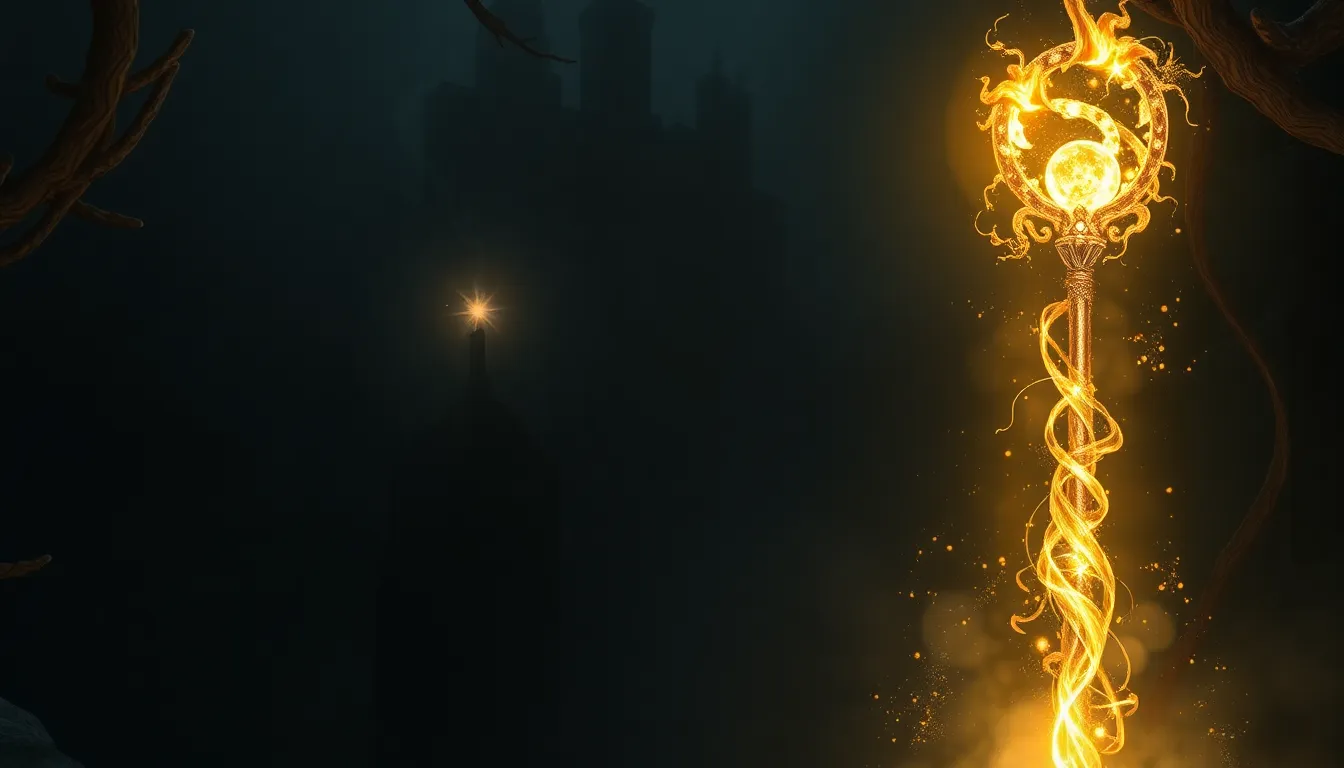The Staff of the Magi: Unveiling Ancient Powers
Introduction to the Staff of the Magi
The Staff of the Magi is a powerful symbol that has captured the imaginations of many throughout history. Defined as a magical tool used by sorcerers, wizards, and spiritual leaders, the staff holds a significant place in various cultural traditions. Its historical significance ranges from being an emblem of authority to a conduit for mystical energy, playing a crucial role in rituals and magical practices.
Across different cultures, the staff is often viewed as a bridge between the earthly and the divine, embodying the connection between humanity and higher powers. This article aims to delve into the rich history, symbolism, and continuing legacy of the Staff of the Magi.
Historical Origins of the Staff of the Magi
The roots of the Staff of the Magi trace back to ancient civilizations, each employing the staff in unique ways. Some key civilizations include:
- Ancient Egypt: The staff was associated with gods and pharaohs, symbolizing rulership and divine power.
- Mesopotamia: Priests utilized staffs during rituals to invoke deities and channel spiritual energy.
- Indigenous Cultures: Various tribes used staffs in shamanistic practices, representing guidance and spiritual authority.
In mythology and folklore, the staff often appears as a magical instrument wielded by powerful figures—such as Merlin in Arthurian legend or the gods of Greek mythology, who used their staffs to perform miracles and cast spells.
Symbolism and Significance in Different Cultures
The Staff of the Magi carries different meanings across cultures, often reflecting the values and beliefs of the societies that revere it.
Comparison of the staff in Eastern vs. Western traditions
In Eastern traditions, such as Buddhism and Hinduism, the staff is commonly associated with wisdom and spiritual guidance. It represents the journey toward enlightenment and serves as a reminder of the spiritual path. In contrast, Western traditions often view the staff as a tool of power and authority, wielded by priests, kings, and sorcerers to command respect and instill fear.
The staff as a symbol of authority and power
The staff is universally recognized as a symbol of authority, often linked to leadership roles. It can represent:
- Leadership and Governance
- Spiritual Guidance
- Protection and Defense
The Crafting of the Staff: Materials and Techniques
The creation of the Staff of the Magi is an art form that involves careful selection of materials and traditional craftsmanship. Historically, the materials used in crafting the staff include:
- Wood: Often chosen for its natural properties, different types of wood were believed to carry specific energies.
- Metals: Silver, gold, and bronze were sometimes incorporated, symbolizing purity, wealth, and strength.
- Stones: Crystals and gemstones were added for their purported magical properties.
Ancient techniques such as carving, inlay, and embellishment were employed to enhance the staff’s beauty and power, making each piece unique and imbued with the creator’s intention.
Magical Properties and Abilities Associated with the Staff
The Staff of the Magi is often attributed with various magical properties and abilities. Some of these include:
- Channeling Energy: The staff is believed to focus and amplify the magical energy of the user.
- Protection: Many traditions regard the staff as a protective tool against malevolent forces.
- Healing: The staff is sometimes used in healing rituals, acting as a conduit for restorative energies.
Famous legends often recount tales of the staff’s use, such as in the stories of powerful sorcerers who wielded it to perform extraordinary feats, from summoning storms to parting seas.
The Role of the Staff in Rituals and Ceremonies
The Staff of the Magi plays a significant role in numerous rituals and ceremonies. Some common uses include:
- Initiation Ceremonies: Used to signify the transition of individuals into spiritual or magical communities.
- Healing Rituals: The staff is employed to channel healing energies during ceremonies.
- Divination: The staff is sometimes used to enhance the clarity and power of divination practices.
In these contexts, the staff serves as a tool for connecting with the divine, facilitating communication with higher realms, and enhancing the spiritual experience.
Modern Interpretations and Uses of the Staff of the Magi
In contemporary practices, the Staff of the Magi has found a place in various spiritual and magical traditions, including Wicca and neo-paganism. Modern interpretations often emphasize:
- The staff as a personal tool for empowerment and self-discovery.
- Its use in rituals to honor nature and the elements.
- The blending of ancient practices with modern spirituality.
Additionally, the staff has been popularized in pop culture, influencing perceptions of magic and spirituality in film, literature, and art.
The Staff of the Magi in Literature and Media
The representation of the Staff of the Magi in fantasy literature and films has significantly shaped cultural understanding. Notable examples include:
- The Lord of the Rings: Gandalf’s staff symbolizes wisdom and power, becoming an iconic image of magic.
- Harry Potter: Wands, akin to staffs, represent personal power and the ability to perform magic.
- Chronicles of Narnia: The staffs wielded by characters embody authority and magical prowess.
Such representations have contributed to a broader cultural fascination with the mystical and the archetype of the wise wizard or sorceress.
Debates and Controversies Surrounding the Staff
While the Staff of the Magi holds a revered place in history, it is not without its controversies. Some issues include:
- Historical Inaccuracies: Many modern depictions may not accurately reflect the staff’s historical uses and meanings.
- Ethical Considerations: The appropriation of symbols from indigenous cultures raises questions about respect and representation.
These debates highlight the need for a thoughtful approach to understanding and honoring the staff’s legacy.
Conclusion: The Enduring Legacy of the Staff of the Magi
The Staff of the Magi continues to resonate in the modern world, symbolizing the enduring human quest for connection to the divine and the exploration of inner power. Its rich history and multifaceted meanings remind us of the complexity of human spirituality.
As we look to the future, the Staff of the Magi may evolve further, weaving itself into new spiritual practices and cultural expressions, while remaining a testament to our fascination with the mystical and the unknown.



